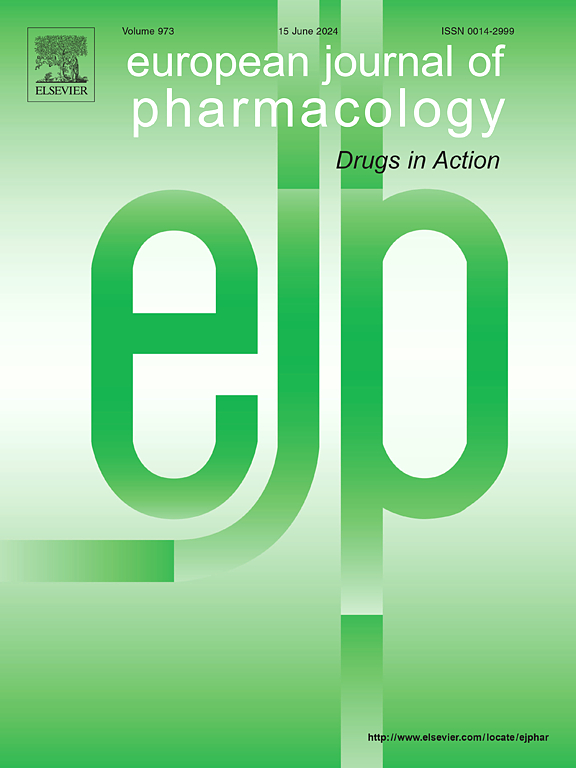Tetrandrine and adriamycin reverse multidrug resistance by regulating NLRP3/Caspase-1/GSDMD signaling in human breast cancer cells
IF 4.2
3区 医学
Q1 PHARMACOLOGY & PHARMACY
引用次数: 0
Abstract
Purpose
This study examined the effects and underlying mechanisms of tetrandrine (TET) combined with adriamycin (ADR) in reversing multidrug resistance (MDR) in breast cancer cells.
Methods
Cell viability, proliferation, and drug resistance were assessed via the MTT assay. Small interfering RNA (siRNA) transfection was used to knock down GSDMD expression in MCF-7/ADR cells. Pyroptosis induction by the combined TET and ADR treatment was evaluated through morphological observations, cytotoxicity assays, and flow cytometry. The expression levels of mRNA and proteins were analyzed using qRT-PCR and western blotting, respectively.
Results
At non-cytotoxic concentrations, the combined treatment of TET and ADR significantly inhibited the growth of MCF-7/ADR cells, demonstrating a synergistic effect in reversing MDR. This combination effectively reduced MDR protein expression in MCF-7/ADR cells via GSDMD modulation, which diminished efflux activity and promoted ADR accumulation. The increased accumulation of ADR subsequently activated the NLRP3/Caspase-1/GSDMD signaling pathway, leading to elevated LDH release and enhanced pyroptosis rates.
Conclusion
The combined use of TET and ADR not only suppresses MCF-7/ADR cell growth but also reverses MDR by targeting the NLRP3/Caspase-1/GSDMD pyroptosis pathway. These findings propose a promising therapeutic strategy for combatting MDR in breast cancer and highlight the potential for further clinical application of this combination therapy.
粉防己碱和阿霉素通过调节人乳腺癌细胞NLRP3/Caspase-1/GSDMD信号逆转多药耐药
目的 本研究探讨了四氢蒽醌(TET)联合阿霉素(ADR)逆转乳腺癌细胞多药耐药性(MDR)的作用和内在机制。方法 通过 MTT 试验评估细胞活力、增殖和耐药性。采用小干扰 RNA(siRNA)转染技术敲除 MCF-7/ADR 细胞中 GSDMD 的表达。通过形态学观察、细胞毒性实验和流式细胞术评估了 TET 和 ADR 联合治疗诱导的嗜热细胞增多症。结果在非毒性浓度下,TET 和 ADR 联合处理可显著抑制 MCF-7/ADR 细胞的生长,显示出逆转 MDR 的协同效应。这种组合通过调控 GSDMD 有效减少了 MCF-7/ADR 细胞中 MDR 蛋白的表达,从而降低了外排活性并促进了 ADR 的积累。结论联合使用 TET 和 ADR 不仅能抑制 MCF-7/ADR 细胞的生长,还能通过靶向 NLRP3/Caspase-1/GSDMD 化脓途径逆转 MDR。这些发现为对抗乳腺癌的 MDR 提出了一种前景广阔的治疗策略,并凸显了这种联合疗法进一步临床应用的潜力。
本文章由计算机程序翻译,如有差异,请以英文原文为准。
求助全文
约1分钟内获得全文
求助全文
来源期刊
CiteScore
9.00
自引率
0.00%
发文量
572
审稿时长
34 days
期刊介绍:
The European Journal of Pharmacology publishes research papers covering all aspects of experimental pharmacology with focus on the mechanism of action of structurally identified compounds affecting biological systems.
The scope includes:
Behavioural pharmacology
Neuropharmacology and analgesia
Cardiovascular pharmacology
Pulmonary, gastrointestinal and urogenital pharmacology
Endocrine pharmacology
Immunopharmacology and inflammation
Molecular and cellular pharmacology
Regenerative pharmacology
Biologicals and biotherapeutics
Translational pharmacology
Nutriceutical pharmacology.

 求助内容:
求助内容: 应助结果提醒方式:
应助结果提醒方式:


